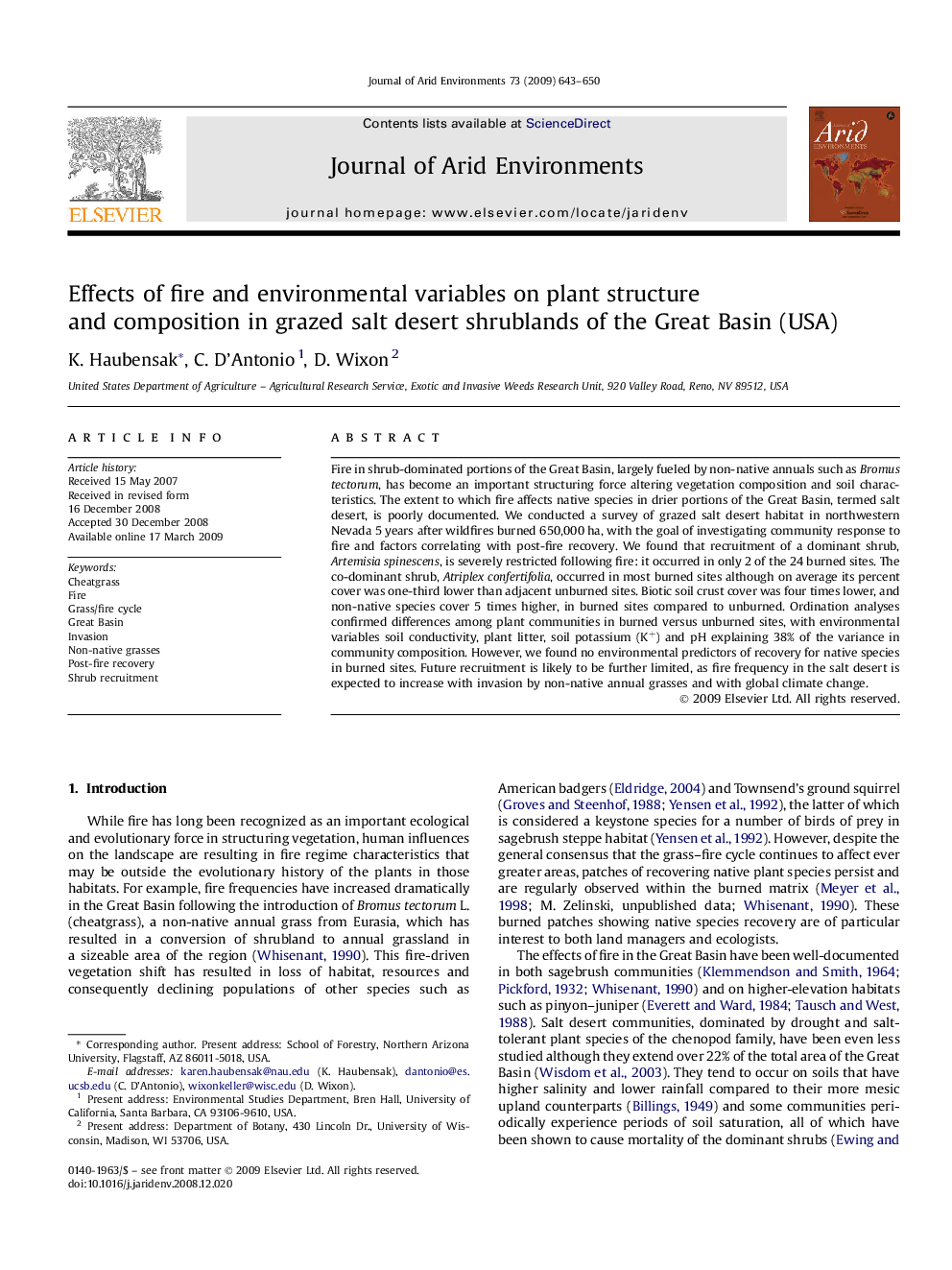| Article ID | Journal | Published Year | Pages | File Type |
|---|---|---|---|---|
| 4393779 | Journal of Arid Environments | 2009 | 8 Pages |
Fire in shrub-dominated portions of the Great Basin, largely fueled by non-native annuals such as Bromus tectorum, has become an important structuring force altering vegetation composition and soil characteristics. The extent to which fire affects native species in drier portions of the Great Basin, termed salt desert, is poorly documented. We conducted a survey of grazed salt desert habitat in northwestern Nevada 5 years after wildfires burned 650,000 ha, with the goal of investigating community response to fire and factors correlating with post-fire recovery. We found that recruitment of a dominant shrub, Artemisia spinescens, is severely restricted following fire: it occurred in only 2 of the 24 burned sites. The co-dominant shrub, Atriplex confertifolia, occurred in most burned sites although on average its percent cover was one-third lower than adjacent unburned sites. Biotic soil crust cover was four times lower, and non-native species cover 5 times higher, in burned sites compared to unburned. Ordination analyses confirmed differences among plant communities in burned versus unburned sites, with environmental variables soil conductivity, plant litter, soil potassium (K+) and pH explaining 38% of the variance in community composition. However, we found no environmental predictors of recovery for native species in burned sites. Future recruitment is likely to be further limited, as fire frequency in the salt desert is expected to increase with invasion by non-native annual grasses and with global climate change.
